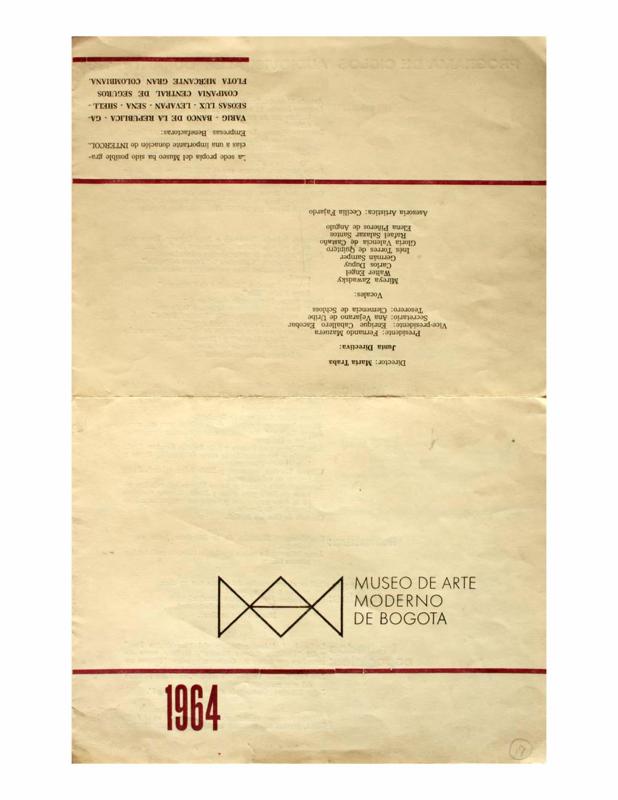On Tuesday, June 30, 1964, the exhibition, Pantoja de Bolivia, opened in Bogotá,consisting of a tempera series, Variaciones sobre el aire de Tarija, [Variations on the Air in Tarija], reviewed by Marta Traba (1923?83) in the local press. Traba also wrote the exhibition catalog, published by the Museo de Arte Moderno de Bogotá (MAM), where the critic and curator was director at the time.
Along with the Peruvian painter, Fernando de Szyszlo (b. 1925) and the Argentines—Antonio Berni (1905–81), Carlos Alonso (b. 1929) and Carlos Uria (1929–2008)—the Bolivian, Óscar Pantoja (1925?2009) was among the first artists invited to hold an exhibition at MAM, based on its mission to support Latin American art. These artists showed their creations, expressing themselves in the unique, heterogeneous language that characterized each country, showing their commitment to the task of creating a Latin American art for the world.
Óscar Pantoja’s work became a symbol of the miracle of Latin American Modern art. In the catalog, Pantoja de Bolivia, we read the following regarding the quality of the paintings in the exhibition: “beyond any determining circumstance, the general cultural milieu, favorable conditions, stimuli, the support of predecessors and bases of expression, in the final analysis, art is inexplicable; it is a miracle.”
The series shown at MAM in June 1964 subtly reveals Pantoja’s concern about Latin America. Tarija, an isolated town in Bolivia, becomes a source of inspiration for a body of painting Traba describes as “spiritual.” In spite of his apparent introspection, this Bolivian artist quickly made himself at home on the international art scene. Before it was sent to Bogotá, his work, Variaciones sobre el aire en Tarija was shown at the Pan American Union, [predecessor to the Organization of American States,] in Washington, DC.
For related documents, see “Segundo Informe anual de actividades, Museo de Arte Moderno de Bogotá” [doc. No. 1093542].

